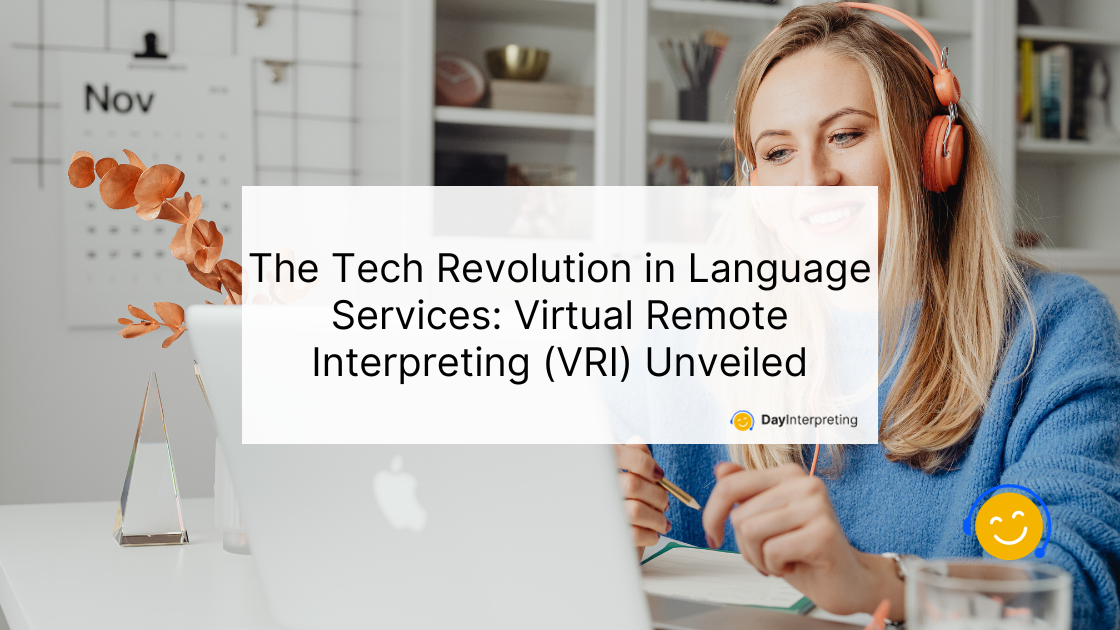In the ever-evolving landscape of technology, one of the most transformative advancements in recent years has been the integration of Virtual Remote Interpreting (VRI) into language services. This groundbreaking technology is revolutionizing the way language interpretation is conducted, making communication more accessible and efficient than ever before. In this article, we explore the VRI side of the tech revolution in language services.
Understanding the Tech Revolution in Language Services
Before delving into the nuances of Virtual Remote Interpreting, it’s essential to grasp the significance of language services in our globalized world. Language services encompass a broad spectrum of activities aimed at facilitating communication between individuals who speak different languages. These services are crucial in various sectors, including healthcare, legal proceedings, business negotiations, and more.
Traditionally, language services relied on on-site interpreters who were physically present at the location where communication was taking place. While effective, this approach posed logistical challenges and limitations, especially in situations requiring rapid and remote language assistance.
The Rise of Virtual Remote Interpreting
Enter Virtual Remote Interpreting, a game-changer in the field of language services. VRI leverages cutting-edge technology to connect interpreters with clients in real-time, regardless of geographical distances. This is achieved through secure online platforms that enable video and audio communication between interpreters and individuals seeking language assistance.
Advancements in the Tech Revolution in Language Services
The success of VRI is underpinned by several technological advancements. High-speed internet, high-definition video cameras, and sophisticated audio systems ensure a seamless and crystal-clear communication experience. These technological strides have not only made VRI possible but have elevated the quality of language services to unprecedented levels.
What’s even more impressive is the integration of artificial intelligence (AI) in VRI platforms which has enhanced the accuracy and efficiency of language interpretation. AI algorithms assist interpreters in real-time, providing context-specific suggestions and improving the overall precision of language translation.
Accessibility and Inclusivity
One of the primary benefits of VRI is its contribution to enhanced accessibility and inclusivity. Individuals who require language assistance, especially in critical situations like medical emergencies or legal proceedings, can now access interpreters promptly. This immediacy has the potential to save lives, ensure legal rights are protected, and promote equal access to services for all, irrespective of linguistic barriers.
VRI also addresses challenges faced by individuals residing in remote or underserved areas, where the availability of on-site interpreters may be limited. Through virtual platforms, interpreters can connect with clients globally, fostering a more inclusive approach to language services.
Efficiency and Cost-Effectiveness
In addition to its accessibility benefits, VRI offers a more efficient and cost-effective alternative to traditional on-site interpreting. Travel expenses for interpreters are eliminated, and services can be provided on-demand, reducing the need for lengthy pre-scheduling and waiting times. This not only streamlines the language service process but also optimizes resource allocation for both service providers and clients.
Challenges and Considerations
While the integration of VRI has undeniably revolutionized language services, it is essential to acknowledge and address certain challenges. Internet connectivity issues, potential language nuances lost in virtual communication, and ensuring the security and confidentiality of sensitive information are among the considerations that demand continuous attention and improvement.
The Future of Language Services
As technology continues to evolve, the future of language services holds even more promising prospects. The integration of augmented reality (AR) and virtual reality (VR) in language interpretation may further enhance the immersive and interactive nature of virtual language assistance.
Additionally, the ongoing refinement of AI algorithms will likely lead to more accurate and contextually aware language interpretation. The continuous collaboration between language experts and technologists will be crucial in ensuring that advancements in technology align with the nuanced and dynamic nature of human language.
Final Thoughts on the Tech Revolution in Language Services
The tech revolution in language services, as exemplified by Virtual Remote Interpreting, is reshaping the way we bridge linguistic gaps. The accessibility, efficiency, and cost-effectiveness of VRI make it a pivotal tool in various sectors, contributing to a more inclusive and connected global community. As we navigate the evolving landscape of language services, the synergy between technological innovation and human expertise will undoubtedly pave the way for a future where effective communication knows no boundaries.





0 Comments